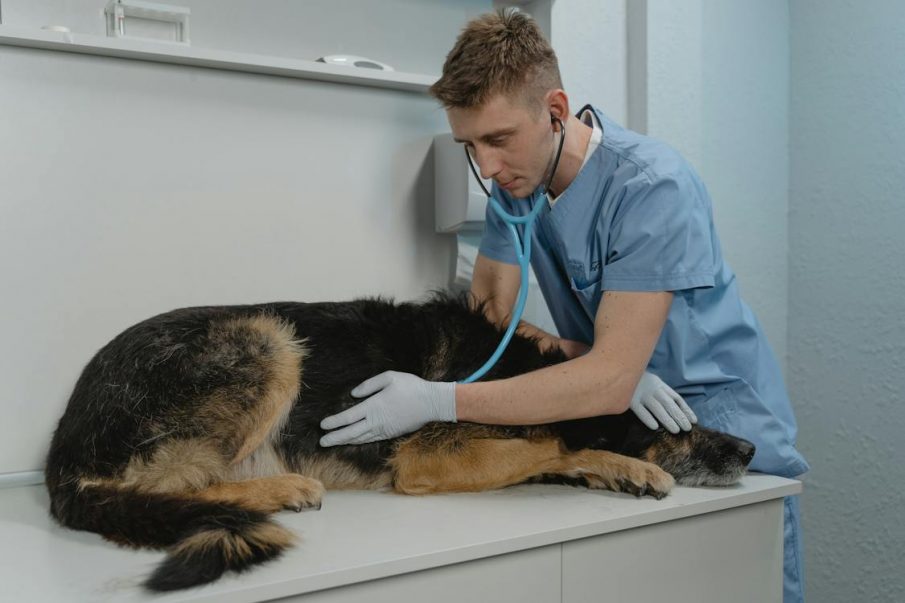Dogs, our loyal companions, bring boundless joy to our lives with their playful antics and unwavering loyalty. However, as our furry friends age, they may face a common and often debilitating issue – joint pain.
According to the National Poll on Healthy Aging, 70 percent of older adults in the US experience joint pain. Much like humans, dogs can suffer from conditions such as arthritis, hip dysplasia, and other musculoskeletal problems that lead to discomfort and limited mobility.
In this article, we delve into the various causes of joint pain in dogs and explore effective strategies to alleviate their suffering.
Causes of Joint Pain in Dogs
Osteoarthritis
One of the primary causes of joint pain in dogs is osteoarthritis, a condition characterized by inflammation of the joints. Canine osteoarthritis is more prevalent in older dogs, but it can affect younger ones as well. The wear and tear on joints over time, coupled with genetic factors, can contribute to the development of osteoarthritis. The dog’s pain and suffering tend to increase over time till proper pain relief treatment is ensured.
According to the American Kennel Club, symptoms of osteoarthritis in dogs include stiffness, lameness, and a noticeable decrease in physical activity. This health problem can affect any joint, including the hips, knees, and elbows.
Hip Dysplasia
Hip dysplasia is a hereditary condition commonly found in larger breeds like German shepherds, Labrador retrievers, and Great Danes. It occurs when the hip joint doesn’t fit snugly into the hip socket, leading to friction, pain, and, ultimately, arthritis.
Dogs with hip dysplasia may exhibit signs like difficulty rising, being reluctant to climb stairs, and a swaying gait. This condition often manifests in young dogs, causing long-term discomfort if left untreated. Without the correct dose of pain medication, it becomes difficult to relieve pain resulting from hip dysplasia.

Overweight and Inactivity
Excess weight means extra strain on your pup’s joints. That means being overweight and inactivity can lead to conditions like arthritis and hip dysplasia.
According to the Association for Pet Obesity Prevention, the obesity rate for pet dogs in the US is now at 59 per cent. An inactive and sedentary lifestyle can also contribute to problems like joint stiffness and reduced muscle mass. Only through regular exercise is it possible to manage weight and promote your dog’s joint flexibility and strength.
Read More: Dog Breeds Prone to Obesity and How to Reduce Your Pets Calorie Intake
Inflammatory Joint Diseases
Inflammatory joint diseases, like Lyme disease and rheumatoid arthritis, can lead to joint pain and inflammation. Lyme disease can cause swelling in the joints, fever, and lethargy. Rheumatoid arthritis, on the other hand, can result in painful, swollen joints.
Identifying and treating the underlying cause of inflammation is crucial for managing joint pain in these cases. To treat pain and discomfort resulting from such a health problem, take your dog to the vet as early as you can. Delays can worsen the inflammation and lead to more problems.
Traumatic Injuries
Accidents and traumatic injuries, such as fractures or ligament tears, can also lead to joint pain in dogs. A sudden onset of pain, accompanied by limping or an unwillingness to put weight on a particular limb, may indicate a traumatic injury. Prompt veterinary intervention is essential to diagnose and treat such injuries effectively, preventing long-term joint damage.
Managing Joint Pain in Dogs
Veterinary Consultation
If you suspect your dog is suffering from joint pain, seeking professional veterinary advice is paramount. A thorough examination, which may include X-rays or other diagnostic tests, can help identify the root cause of the pain. Once the specific condition is diagnosed, a tailored treatment plan can be developed to address your dog’s unique needs.

Medication and Supplements
Vets may recommend pain relief meds like NSAIDs. For joint pain, especially due to osteoarthritis, vets usually recommend meloxicam for dogs. This veterinary medicine helps manage osteoarthritis pain and inflammation. You can administer meloxicam orally or even via injection.
However, according to PetCareRx, meloxicam, like most other medications, can cause allergic reactions. These reactions include alopecia, moist skin, necrotizing panniculitis, hives, etc. If you notice more adverse reactions, consult your vet immediately.
While oral medications and traditional NSAIDs offer symptomatic relief, newer advancements in veterinary medicine are focusing on targeting the underlying causes of joint inflammation. For instance, some innovative therapies involve direct injections into the affected joint, aiming to reduce inflammation at its source and protect cartilage from further degradation.
These advanced approaches can provide more sustained relief and improve a dog’s long-term mobility, especially when initiated early. Exploring all available options for dog arthritis treatment with your veterinarian can help determine the most effective plan for your pet’s specific condition.
Weight Management
Maintaining a healthy weight is crucial for managing and preventing joint pain in dogs. If your dog is overweight, work with your vet and develop a tailored diet and exercise plan for your canine pal. Controlled weight loss can significantly reduce the strain on joints, alleviating pain and improving overall mobility.
Physical Therapy
Physical therapy techniques, including massage, stretching exercises, and hydrotherapy, can play a vital role in managing joint pain. These therapies help improve muscle strength, enhance joint flexibility, and alleviate stiffness. Under the guidance of a veterinary professional, incorporating physical therapy into your dog’s routine can contribute to a more active and pain-free lifestyle.
Orthopaedic Beds and Supportive Gear
Providing a comfortable and supportive environment is essential for dogs dealing with joint pain. Investing in an orthopaedic bed with memory foam or other supportive materials can offer relief from pressure points and improve overall comfort. Also, supportive gear such as braces or wraps may be recommended by veterinarians to stabilize joints and reduce pain during physical activities.
Lifestyle Modifications
As your dog ages or if they are diagnosed with a chronic joint condition, adapting its lifestyle becomes crucial. Consider modifying its living space to minimize the need for climbing stairs. Provide ramps for easier access to elevated areas and choose appropriate toys and activities that are gentle on its joints. Small adjustments can significantly enhance your dog’s quality of life.
In conclusion, joint pain in dogs is a common and often challenging condition that requires careful attention and proactive management. By understanding the causes of joint pain and implementing effective strategies, we can provide our beloved companions with a better quality of life.
Regular veterinary check-ups, weight management, and the incorporation of supportive therapies are essential components of a comprehensive plan to address joint pain in dogs. Remember, a proactive and compassionate approach to your dog’s well-being can make a significant difference in its comfort and happiness throughout its golden years.






